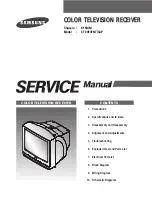
70
Using the Web Server
•
All the message types pertaining to a given data format are
listed vertically. These are the following:
•
To enable the output of a differential message, you just
need to enter the desired refresh rate (in seconds) for this
message in the corresponding field.
•
Leaving a field blank means you don’t want the message
type to be output.
•
For ATOM message types, you need to choose between the
different formats available (“Standard”, “Compact” or
“Super Compact”). Basically, the difference between the
three formats lies in the length (size) of the ATOM
messages generated.
Compared to the “Standard” format, “Compact” and
“Super Compact” will produce shorter messages for the
same message content. “Super Compact” will deliver even
shorter messages than “Compact”.
Basically, data compacting is achieved by lowering the
level of redundancy across messages. Through this
process, some message data are sampled, which means
that instead of being present in every single message
generated by the base, they will in fact be provided every
x occurrences of the message.
Reconstructing full messages on rover side will however
not tolerate data loss in the transmission. The successful
use of the “Compact” or “Super Compact” formats
therefore demands a very robust data link. In that respect,
a conventional serial line using a cable is more likely to
meet this requirement rather than a radio used in difficult
reception conditions. But on the other hand, using a
compact format seems more especially appropriate to
radio links, owing to their potentially limited data
Format
Message types
ATOM
RNX
- Standard (4), Static Base
- Compact (100), Static Base
- Super-compact (101), Static Base
- Standard (204), Moving Base
- Compact (300), Moving Base
RTCM2.3
Message types: 1, 3, 9, 16, 18/19, 20/21, 22, 23, 24, 31, 32, 34,
36
RTCM 3.0
& 3.1
Message types: 1001-1013, 1019, 1020, 1029, 1033
CMR
Message types: 0, 1, 2, 3
DBEN
Ashtech legacy message
Summary of Contents for HDS800
Page 1: ...Reference Manual HDS800...
Page 16: ...x Enabling a Firmware Option 639 Decoding an NTRIP Source Table 639 Logging Raw Data 642...
Page 54: ...38 Receiver Description...
Page 104: ...88 Using the Web Server...
Page 189: ...173 Web Server Help Files Collection Configuration Tab...
Page 266: ...250 Using Serial Commands...
Page 606: ...590 Query Command Library...
Page 619: ...603 Data Output...
Page 628: ...612 Data Output...
Page 650: ...634 Troubleshooting...
Page 660: ...644 Other Procedures Memos...
Page 676: ...X XDR 110 112 587 Z Z Blade 1 ZDA 347 431 588...
Page 677: ......















































